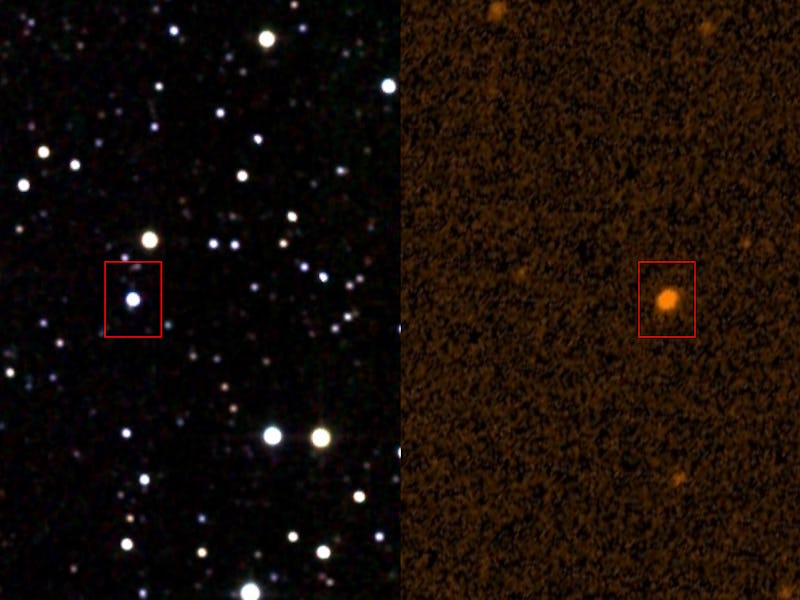'Alien Megastructure' Star May Actually Be an Alien Megastructure
KIC 8462852, the strangest star in the sky, is still not explainable by science.

Who needs News of the Weird when you’ve got the internet? For today’s installment of the currently unexplainable and totally mind-boggling, it turns out that the “alien megastructure” officially known as KIC 8462852 — the thing we were reading about in October — may actually be an alien megastructure. Maybe.
The Atlantic first reported on KIC 8462852, an unusual star: It emitted a light curve with odd, unexplainable dips, showing activity “unlike anywhere else over 150,000 observed stars.”
Inverse reported that it was so unique that researchers had never seen anything like it. First flagged in 2011, it was a mature star with matter circling tightly around it, something common only in a younger star.
Those who star-stalked images taken by the Kepler Space Telescope are called “Planet Hunters,” which is a lot sexier a name than “citizen scientists.” They are the human eyes that observe how the light of stars changes over time.
Soon after, the SETI Institute or “search for extraterrestrial intelligence” took its turn with the celestial mass’s direction. In November, it attempted to catch any radio activity coming from the celestial mass’s direction, but got no feedback from the extraterrestrials. It put out a statement that assured, “It’s quite likely that this star’s strange behavior is due to nature, not aliens.” Not long after, data acquired by NASA’s Spitzer Space Telescope seemed to prove that the bizarre activity is just a huge group of swarming comets.
But stargazers can rejoice in the new news this week that whatever’s making this star funny, it’s definitely not comets. So KIC 8462852 is again probably an alien megastructure. Maybe.
Astronomer Bradley Schaefer of Louisiana State University decided to further observe the history of this star and dug deep into Harvard’s archives. He worked with data from all the way back in 1890. He posted his findings on arXiv this week. The Independent reports that the changes in the star include a 20 percent loss of brightness and don’t follow any pattern. “That would suggest something gigantic must be blocking the light at random times, meaning that it couldn’t be a planet or other regular orbiting object because that would generate a distinct pattern of dimming light.”
And according to Schaefer, it sure isn’t swirling comets. “This ‘century-long dimming trend requires an estimated 648,000 giant comets (each with 200 km diameter) all orchestrated to pass in front of the star within the last century,’ which he said is ‘completely implausible,’” The Independent notes.
Like the Yeti and Nessie, it’s nice to have a little mystery in life. So here’s hoping that KIC 8462852 is our first alien megastructure. Because oh, the weird stories we’ll be able to write!